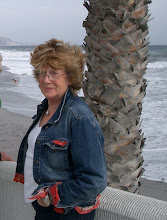




Having made lots of friends in Devon and Cornwall on our visits to Cowslip Workshops we thought we would have a day out and explore Tavistock. We were delighted with what we found.
The whole town is so attractive with lots of individual shops and cafe. The architecture is wonderful and we were thrilled to find some really historic ruins right in the center. As soon as I got home I was looking things up and below is a piece written by the local authority, we did spot a tin mine on the road to Lydford and saw the name " stannary" used in a place name so it bits are starting to fit and build up a picture
Tavistock, an ancient stannary (tin-assaying and tin-marketing) town, lies on the south-west edge of Dartmoor National Park , about 24 km (15 miles) north of the maritime city of Plymouth. The name "Tavistock" derives from "Tavy", the River on which the town lies, and "stock" indicating that the town became a prominent agricultural market for the area, after its progressive development around a Benedictine Abbey, founded in AD974.
The importance of Tavistock's market was recognised by the granting of a Market Charter by King Henry I to the town in 1105. The 900th Anniversary of that Charter and also the 700th Anniversary of Tavistock as an official Stannary Town was celebrated in the town in 2005 by a programme of history, musical and artistic events running from the start of the year to the 30th August, the latter being the day of St Rumon, the patron saint of Tavistock.
A further part of Tavistock's history is that Britain's great seafarer hero, Sir Francis Drake , was born at Crowndale Farm, just south of Tavistock, in 1542. A fine statue of him can be seen not far from the town centre, on the road to Plymouth, the port from which he set sail to confront and beat the Spanish Armada.







No comments:
Post a Comment